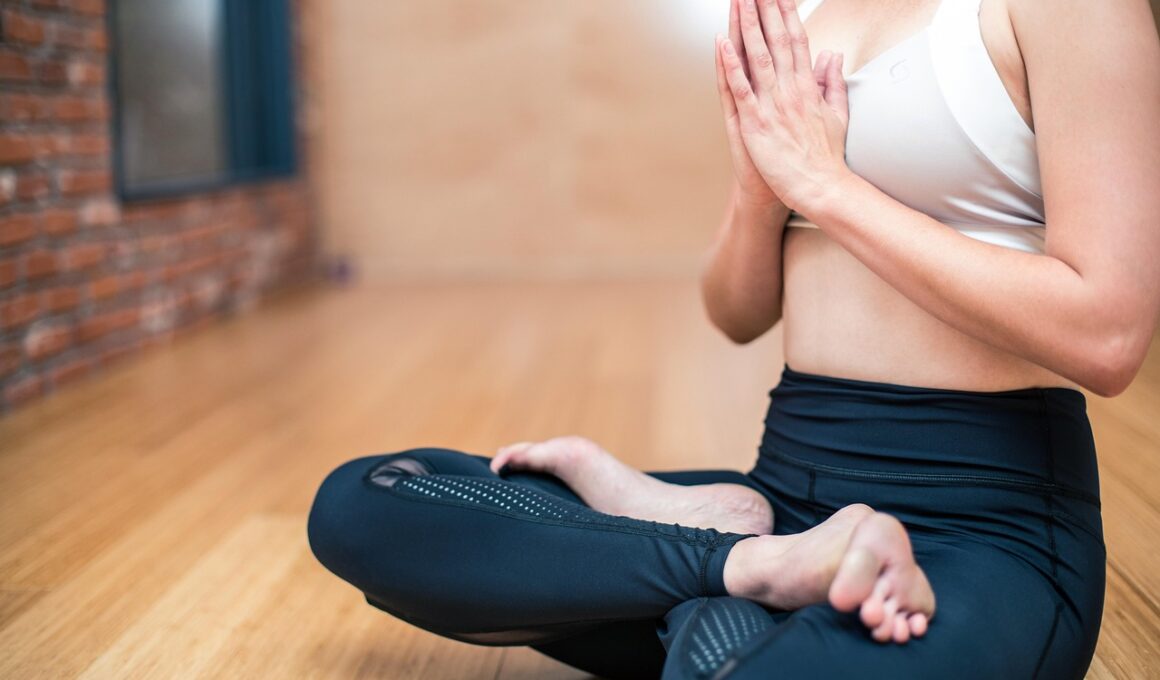Incorporating Mindfulness Into Your Fitness Routine for Mental Health
Mindfulness-Based Stress Reduction (MBSR) is an innovative approach to managing stress that combines simple mindfulness and gentle exercise. Physical activity not only benefits the body but also has profound effects on mental health. Integrating mindfulness into your fitness routine creates a holistic practice that enhances overall well-being. By focusing on your breath and body during exercise, you cultivate awareness, grounding, and relaxation that can alleviate symptoms of anxiety and depression. Engaging in mindful movement allows you to tune into your feelings and connections. Regular exercise, paired with mindfulness techniques, can lead to significant improvements in emotional resilience. The key is to approach workouts with a sense of curiosity. This doesn’t mean you have to complicate your sessions but simply bring an open heart to your experience. Gentle yoga or tai chi can be excellent starting points for introducing mindfulness. They emphasize breathing and focused consciousness, aligning the mind and body. Every time you exercise, aim to be present, savoring every motion and feeling. This practice can be transformative, fostering a deeper relationship with fitness, while nurturing both your physical and mental health.
The benefits of incorporating mindfulness into your fitness routine extend beyond just immediate stress relief. Long-term practice helps create coping mechanisms for life’s challenges. Research has shown that individuals engaging in regular mindful exercises experience enhanced mood, reduced stress, and improved concentration. Mindfulness makes you aware of negative thoughts and recognizes them without judgment. This awareness provides the opportunity to let go of unproductive patterns, allowing for a more serene mental state. Regular exercise releases endorphins, and when combined with mindfulness, these feel-good chemicals can significantly elevate your mood. Not only does this approach to fitness yield emotional benefits, but it can also improve focus, so you’re more efficient in daily tasks. Techniques such as guided imagery and breath awareness can be seamlessly incorporated into traditional workouts, refining them into mindful experiences. As you work out, pay attention to the rhythm of your heart and the sensations in your muscles. This will not only enhance your physical exertion but also your mindful awareness. By turning your attention inward during your workout, you deepen your connection with yourself, which can enhance self-esteem. This practice fosters a kinder, more compassionate relationship with your body and mind.
Practical Tips for Mindful Exercise
Starting a mindful exercise routine doesn’t have to be complex; in fact, simplicity is key. Consider beginning with basic principles: focus on your breath. As you engage in any physical activity, take a moment to slow down and get in tune with your breathing patterns. Breathe deeply and rhythmically, noticing how your body feels. You can practice these techniques whether you’re running, lifting weights, or doing yoga. Find a peaceful setting where you can move freely without distractions, enhancing the experience. Make it a ritual by dedicating time for yourself, free from digital distractions. Another excellent tip is to put away any form of technology during your workouts. Disconnecting allows you to connect fully. During movement, direct your attention toward your body – feel the ground beneath your feet, the pull of gravity, and the strength in your muscles. Incorporating sounds from nature or calming music can enhance your focus on the present. Additionally, consider experimenting with various mindful exercises such as walking meditation or outdoor activities, which can enhance the perceived benefits of physical activity. Whatever you choose, remember that the first step is simply showing up and engaging fully.
To further enhance your mindful fitness journey, set intentions before starting your session. Clear intentions can anchor your workouts in purpose, guiding your focus and energy throughout. This might involve reflecting on what you want to achieve during the workout or how you wish to feel afterward. For example, your intention might be to cultivate a sense of peace or to honor your body’s capabilities. By stating these intentions clearly, you create a roadmap that helps you stay on track. During your workout, continually remind yourself of this intention, like a compass that directs your energy. Don’t forget to practice gratitude for your body and what it can do for you. Show appreciation for the movement and the privilege of exercising. This grateful mindset fosters a positive outlook on fitness. Additionally, consider journaling about your experiences after workouts. Reflecting on how you felt during the routine can provide insights into what works best for your mental health. Explore and document your fitness objectives openly, and assess how mindfulness practices influence your overall emotional stability. Creating a written record establishes accountability and helps track your emotional progress.
The Role of Community in Mindfulness and Fitness
Connection plays a pivotal role in enhancing mindfulness in fitness practices. Engaging with a community provides support, encouragement, and a sense of belonging. When you share your experiences with others, you can inspire or be inspired in creating a positive mental environment. Group activities like yoga classes, running clubs, or workout sessions that prioritize mindfulness benefit from the synergy created among participants. Practicing together can magnify the effects of mindfulness, as the group energy can bolster individual motivation. Intentional group settings allow for shared goals that enrich personal journeys while fostering teamwork. Consider joining classes that focus on mindfulness practices in movement. This can offer mutual benefits and learning opportunities within a nurturing environment. Embrace the conviction that everyone experiences challenges in their fitness journey; talking about them openly fosters empathy. You might find that others share your struggles with mental health and mindfulness. This camaraderie helps create a safe space for emotional expressions and growth, essential for mental well-being. In navigating collective wellness through fitness, prioritize mutual support and understanding; such solidarity paves the way for long-lasting transformations.
Injury can impede fitness and mental health progress. Nonetheless, incorporating mindfulness can positively influence your recovery journey. Being present during exercises can help your body establish safe patterns, lowering injury risks. Practicing awareness about how your body feels during workouts helps you recognize when something feels off; listening to these cues is critical. Instead of pushing through intense pain or discomfort, take note and adapt. This might mean adjusting form, switching exercises, or taking more rest days. A mindful approach encourages patience and self-compassion as you navigate setbacks. Understand that healing takes time, treating your body gently and with respect. You can integrate mindfulness exercises such as guided breathing or meditation into your recovery routine. These not only calm your mind but also help visualize healing and restoration. If you face a serious injury, consult a professional who incorporates mindfulness in their rehabilitation approach. Collaborate with physical therapists or trainers who appreciate the psychological components of recovery. In totality, embracing a mindful perspective can alleviate frustration associated with injury. Instead of viewing setbacks unfavorably, use them as opportunities for personal growth and deeper understanding of both mind and body.
Conclusion: A Holistic Approach to Mental Health
Incorporating mindfulness-based practices into your fitness routine cultivates a holistic avenue toward mental health. The synergy between physical workouts and mindfulness techniques offers comprehensive benefits, aligning both your body and mind. Regular engagement leads to profound effects on emotional well-being, fostering resilience against daily stressors. Mindful exercises enhance the capacity for self-awareness and compassion, leading to tolerance even during challenging situations. For those hesitant to start, remember that every small effort counts; even brief mindful sessions can yield lasting benefits. With consistency, you can build a practice that reflects your unique needs while supporting your emotional journey. Mindfulness transforms traditional workouts into rewarding rituals. This approach encourages you to focus not solely on physical health but to embrace emotional wellness. As you progress on this journey, continuously assess your intentions and goals, adapting your practice when necessary. Seek connection and support from diverse communities, sharing experiences and insights. Each step taken towards integrating mindfulness in fitness nurtures a more profound understanding of yourself. Ultimately, through this holistic approach, you unlock greater potential not just in physical fitness, but also in mental harmony, emotional stability, and overall health.
Your mental health matters, and mindfulness-based fitness routines can offer transformative benefits. By embracing these practices, you’re making a commitment to yourself and prioritizing your well-being. Challenge yourself to incorporate mindfulness in each workout, and begin experiencing its rich rewards.


